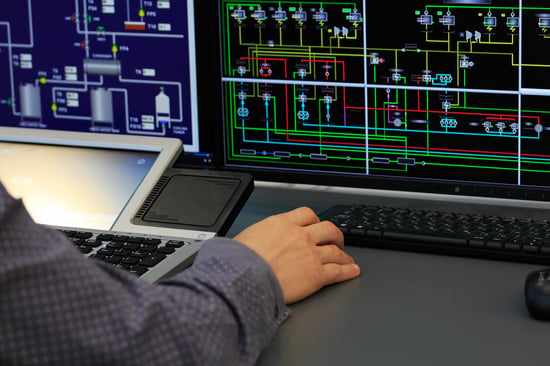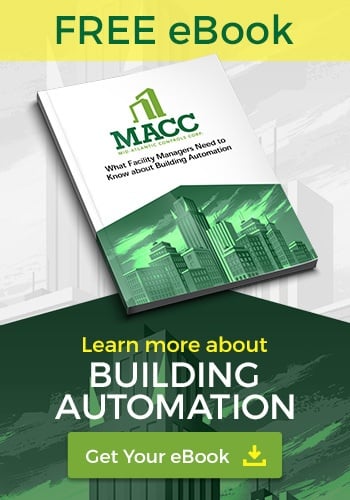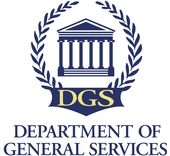
Digital controls, IoT sensors, and other modern building management technologies make it easy to get the most out of your systems. However, these advanced options could be out of reach unless you’ve integrated your building management system (BMS).
Tridium’s Niagara Framework is a truly “open” building management platform. It combines mechanical and electrical systems from any manufacturer into a single control portal. With Niagara, you gain superior management and insight into operations throughout your entire building.
Read on to explore our comprehensive guide and discover the value you’ll get from the Niagara Framework.
Table of Contents
Click the links below to jump to any section in this article:
- Brief History of Building Management
- Integrating Multiple Systems to Your BAS
- Tridium’s Niagara Framework
- Niagara Enhances Building Management
- Niagara Software Features
- Evaluating Niagara's Advantages and Limitations
- Why More Professionals Choose Niagara
- Niagara Software Training
- Selecting the Optimal BMS Partner
Brief History of Building Management
A facilities manager in this day and age can use a building automation system to perform a wide range of tasks, including:
- Visualizing energy load by equipment type
- Monitoring occupancy levels
- Executing logic sequences based on data observation
- And much more
However, it wasn’t always this way.
Building automation began in 1883 when Warren Johnson invented the thermostat. This was when the idea of using a feedback loop to control an indoor environment took hold. People soon started applying the concept to more than just temperature readings.
Next up was the use of pneumatic HVAC controls in the late 1960s. Analog electronic systems debuted in the 1980s until microprocessor-based direct digital controls became the norm in the 1990s. These electronic systems were faster and more precise. They became the direct digital control (DDC) devices used today.
Manufacturers eventually developed their own communication protocols for equipment and software. However, it rapidly became clear that they needed an industry standard. This initiated the push for “open” vendor-agnostic protocols (such as BACnet), which allowed the integration of systems by multiple vendors.
Open protocols enabled connecting various building systems. Even so, seamless integration remained difficult. This ongoing challenge paved the way for innovations to unify building management.
Integrating Multiple Systems to Your BAS
Buildings often have several different building management systems. Integrating these systems allows you to monitor and control all systems and components from one central source.
A facilities manager can better understand building operations when data is easy to gather, monitor, and analyze. The Niagara Framework from Tridium consolidates information from all of a building’s systems into a centralized portal providing access to:
- Data histories
- Real-time device readings
- Standard and customized reporting
- Automated control strategies
- Fault detection and diagnostics
Tridium has consistently been at the forefront of smart building automation and management. With the Niagara Framework's data management capabilities, you can control building operations like never before.
Tridium’s Niagara Framework
The push for open protocols laid the foundation for future innovation in building management systems. However, even with these open standards, devices from different vendors could not communicate seamlessly in the 1990s.
This lack of true integration inspired Tridium to launch the Niagara Framework in 1999. Niagara aimed to fulfill the vision of a platform that could easily connect controls across building systems, regardless of manufacturer.
Tridium worked towards the dream of a truly “open” system by creating alliances with major industry vendors to improve integration. The company’s concept was so popular that the Niagara Framework surpassed 100,000 installations in less than ten years.
In 2015, Tridium released Niagara 4. This major update featured bold and intuitive next-generation IoT capability and an all-new hardware platform. Tridium has since added additional enterprise-level features to expand the capabilities of Niagara 4.
Today, the Niagara Framework has over one million installations worldwide. Tridium continually updates Niagara by working closely with vendors and customers. They incorporate new technologies into products based on feedback about user needs.
Niagara Enhances Building Management
The power of the Niagara BMS system comes from its ability to connect intelligent systems more effectively than other offerings. The Niagara Framework itself provides a software infrastructure for building management.
Think of the Niagara Framework as the frame of a house that provides a solid underlying structure. You can remodel the interior of the home as you see fit. However, the frame remains strong and supports any changes you make.
The Niagara Framework is modular and allows you to scale a system up or down. You can customize your BMS with specialized equipment or additional Niagara software products. This flexibility makes it easy to adapt as your facility changes over time.
Integrate With Ease
Equipment and systems manufactured by different vendors typically require an integrator to understand the protocols and configuration for each manufacturer. Specialized hardware and technician expertise drive up integration costs.
With Niagara, integrating any manufacturer’s equipment is simple, thanks to the widespread development of Niagara drivers. Install the driver for a particular system, and it’s ready to use with your BMS.
Niagara Software Features
The Niagara Framework offers several key software features, making it a versatile and comprehensive building management system solution. With its open architecture and integration capabilities, Niagara provides unique benefits for connecting and controlling diverse systems within a building.
One of the most essential Niagara software features is its ability to support numerous protocols and integrate diverse systems. The framework can connect to and control BACnet, LonWorks, Modbus, oBIX, SNMP, OPC, and other standard protocols.
This interconnectivity allows seamless communication between HVAC, lighting, security, fire, and other building systems regardless of manufacturer or communication protocol. The intelligent integration enabled by Niagara allows centralized monitoring and control of all systems through a single platform.
HVAC Control Capabilities
Tridium includes robust Niagara HVAC software to manage building heating, ventilation, and air conditioning systems. It allows for centralized monitoring and control of HVAC equipment, including boilers, chillers, air handlers, pumps, valves, sensors, and actuators.
Features include powerful dashboards, monitoring, reporting, and analytics tailored for management and optimization. These capabilities make the framework a versatile solution for integrating, managing, and enhancing HVAC systems.
Customization for Unique Needs
What truly sets Niagara apart is that it has a 3rd party development toolkit. Developers can build custom software drivers that greatly expand compatibility. Additionally, people can use the open framework architecture to create custom functions and features tailored to their needs.
Rapid Development of Custom Strategies
In addition, Niagara includes built-in visual programming capabilities. These tools allow developers to build custom control strategies and graphical interfaces without traditional programming.
Visual programming expedites and simplifies the creation of supervisory control strategies tailored to each unique application. Developers can quickly build control sequences and user interfaces that meet the specific needs of any building.
Robust Cybersecurity
The Niagara Framework also features robust built-in cybersecurity that provides encryption, authentication, access control lists, and audit logging to protect building systems. This is crucial for securing web-connected BMS against potential cyber threats. The framework's cybersecurity capabilities help protect building data and control networks.
High-Speed Data Transfer
Furthermore, Niagara offers high-speed data collection and distribution capabilities. It can quickly gather data from numerous inputs, analyze and process it, and distribute commands to outputs across a building. Fast data transfer enables the framework to support monitoring and control of real-time critical systems.
Niagara has a massive edge over the competition thanks to its ability to:
- Connect to more network protocols
- Seamlessly integrate more diverse 3rd party systems
- Offer more customization options
A Unique and Comprehensive BMS Platform
The Niagara Framework delivers a unique software platform for integrating and controlling diverse systems across a building. The open architecture, visual programming, built-in cybersecurity, and high-speed data capabilities offer a versatile solution for demanding building applications.
These building management software features empower comprehensive monitoring and control not achievable with other BMS platforms.
Evaluating Niagara's Advantages and Limitations
It’s important to consider the advantages and disadvantages of a building management system.
Here is an overview of key pros and cons of the Niagara Framework:
Pros:
- Integration capabilities – Can connect diverse systems and protocols into one platform.
- Customization – Allows the development of custom drivers, control sequences, and user interfaces.
- Speed – Provides high-speed data gathering, analysis, and control.
- Intuitive interface – Features easy navigation, search, and workflow.
- Scalability – Can scale up or down and adapt as facility needs change.
Cons:
- Initial cost – License and setup fees can be expensive for smaller facilities.
- Expertise needed – Requires trained engineers to properly install, program, and maintain.
- Dependence on drivers – Integration requires vendor-developed drivers, which may have bugs.
- Web-based risks – Potential cybersecurity threats associated with web-connected systems.
The Niagara Framework offers powerful integration, customization, and scalability benefits for comprehensive building management. However, the costs, expertise required, reliance on drivers, and cybersecurity risks may make Niagara excessive for facilities with just basic needs.
Why More Professionals Choose Niagara
Tridium’s Niagara has gained a reputation as one of the most comprehensive BMS software offerings on the market today. Businesses worldwide trust Niagara to connect building systems to the people who manage them.
Here’s why more professionals choose the Niagara Framework:
Scalable – Big or small, Niagara can adapt to any facility size. Data centers, manufacturing plants, hospitals, and educational institutions can all utilize Niagara’s powerful capabilities and ease of use.
Intelligent – Easy integration and advanced technology constantly guide Niagara’s development as it moves towards the ultimate open system. The Niagara Framework offers users the latest cybersecurity, IoT tech, and data analysis.
Intuitive – Niagara offers features built with the user in mind. These include a single portal for controlling all systems. The portal also enables optimized workflow, superior search, and rapid navigation. You don’t need to be an integrator or a computer programmer to understand how to use and leverage Niagara.
Niagara Software Training
Effective training is essential to get the most value from the powerful Niagara Framework building management system. With its advanced integration, data analysis, and control capabilities, Niagara enables optimization and efficiency gains that typical building automation system (BAS) platforms cannot match.
However, realizing Niagara's full potential requires proper training to fully utilize its many features.
MACC provides comprehensive and customized Niagara Framework training tailored to your facility and needs. We cover core system navigation and visualization for clients seeking only basic operations. For those wanting greater scope, we take a deep dive into data interpretation, troubleshooting techniques, and best practices for management.
The training progresses from fundamentals to advanced functions based on your desired level of knowledge. Our highly experienced instructors share insider tips and industry expertise throughout the engaging hands-on training.
The training will give facility managers a better appreciation and understanding of the technology underlying the Niagara Framework’s capabilities and will empower them to fully utilize Niagara to meet their building’s goals.
The Importance of Selecting the Optimal BMS Partner
Choosing the right building management system matters. Equally important is picking the proper provider. They should offer unbiased guidance to identify the optimal BMS platform based on your technical requirements, budget, and growth plans.
The provider should also ease the transition with thorough training and ongoing support, allowing you to maximize value from the technology. At MACC, our vendor-agnostic approach ensures the perfect BMS solution for your facility. We take the time to understand your objectives and constraints before proposing the ideal system for you.
Our experts provide training and assistance throughout selection, deployment, and operation. With deep BMS expertise and dedication to customer satisfaction, MACC delivers an exceptional experience.
We Are the Niagara Experts
At MACC, we install, maintain, and support the Niagara Framework. As an independent controls contractor, we’re proud to provide our customers with building management solutions that fit their needs.
We strongly promote open systems that allow our clients to choose from any equipment manufacturer. Our only goal is to ensure you have the right system to solve your unique challenges.
Tridium’s Niagara Framework has the power to integrate and optimize nearly any building system. Click below to discover how to make your facility management faster, easier, and more efficient.














